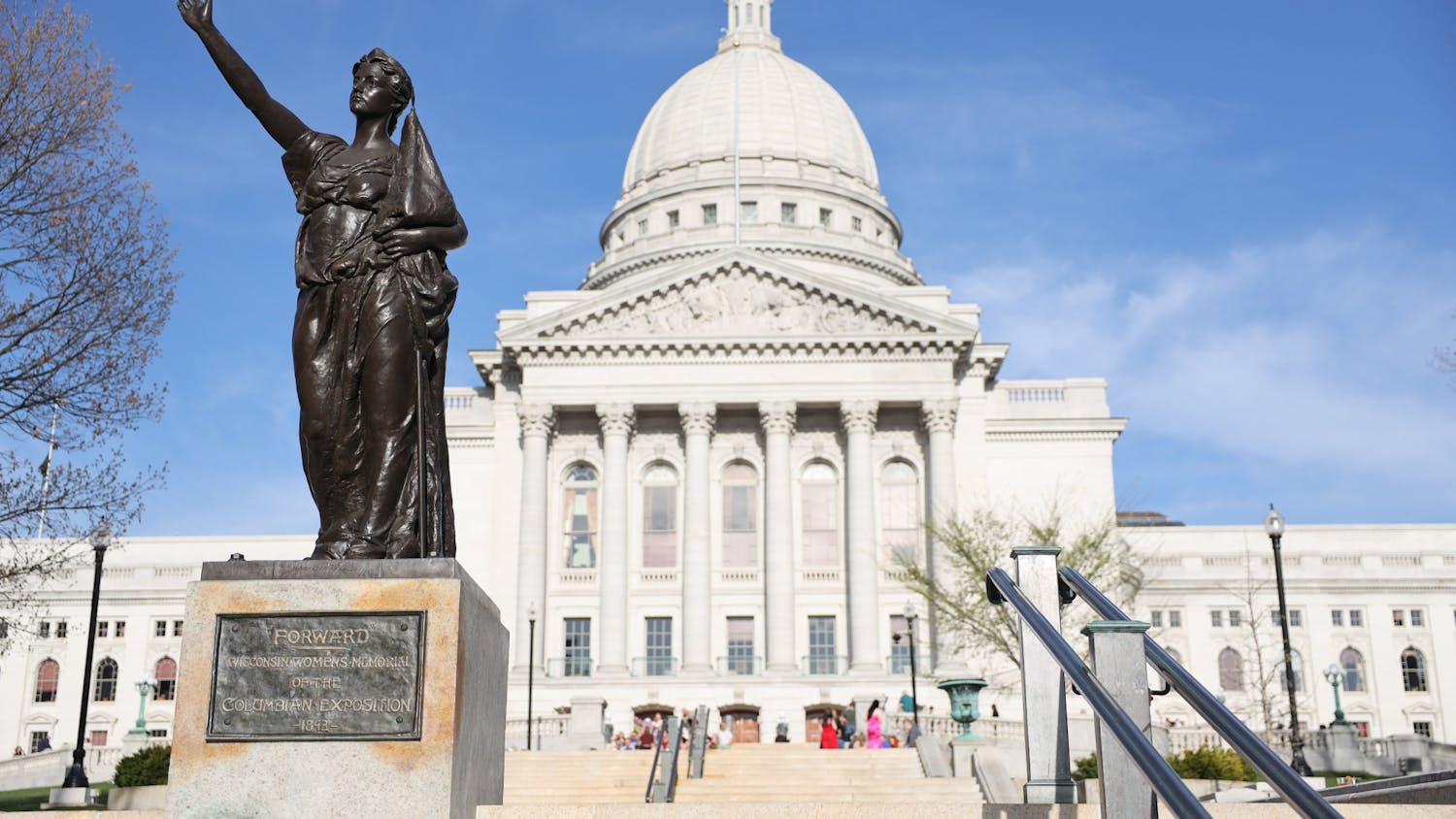After weeks of releasing bits and piece of his executive budget while traveling throughout Wisconsin, Gov. Scott Walker laid out the finite details of his 2017-’19 budget proposal at the Capitol Wednesday, championing education as the state’s top priority.
Perhaps most notable in Walker’s education pledge was reversing a pattern of cutting UW System funding, which happened in his last three budgets.
As promised in his State of the State speech last month, Walker proclaimed Tuesday that he wants to give the UW System $100 million more in funding based on performance, paired with a 5 percent budget cut for all UW System schools and a $35 million grant to make up for revenue loss from the tuition decrease.
The budget announcement also served as a signal that Walker is gearing up to run for a third term as governor in 2018, a race that is expected to be hard fought.
“We’re putting more money into public education than ever before, making college even more affordable, caring for the truly needy, building a stronger infrastructure, rewarding work and cutting taxes to the lowest point in decades,” Walker announced.
Act 10 reform savings cited responsible for increase in K-12 funding
Walker’s directed his focus on providing money for K-12 education for all schools in this budget. He proposed a $649 million increase for all K-12 schools and a $509 million increase for public schools using a per-pupil aid metric, which is simpler, although not necessarily better for poor districts, as the state’s current aid formula.
“Independent studies show our Act 10 reforms have saved schools, local and state government some some $5 billion,” Walker said. “They note that the savings from these reforms more than cover the budgetary changes in the past.”
In order to collect the aid, however, school districts are required to “certify compliance with 2011 Wisconsin Act 10” and must direct that aid to individual school buildings, as stated in the “Budget in Brief.”
Madison, so far, is the only known school district to reject collective bargaining limits.
The governor also directed $2.5 million in funds for students with mental illnesses to receive mental health services with an additional $500,000 for Milwaukee students.
Rural school districts could also receive $20 million more in funding and $10 million to address transportation difficulties.
Democrats say budget isn’t balanced
Walker’s pledge to invest in education has been applauded by many school leaders. The money could not come sooner for some rural districts that have been struggling to simply stay open.
Members of the opposition, however, are skeptical of how genuine Walker’s proposals are.
“If I took $250 from you two years ago and then gave you back $100, would you call that a strong financial commitment or would you still feel short changed?” asked Rep. Katrina Shankland, D-Stevens Point, referring to the $250 million budget cut the UW System faced last budget.
Other Democrats questioned the validity of the money proposed for education funding.
“We don’t know if the money is real or fake money,” Sen. Lena Taylor, D-Milwaukee, said. “I would like a real budget that is not an irresponsible budget.”
Road projects to see delays
With such a large amount of state aid going toward education, other budget-funded necessities, such a transportation costs, will continue to feel a strain for the next two years.
In the next two years, Walker wants to allocate funds to local governments to fix roads and bridges as well as an unprecedented amount for state highway rehabilitation. Plans to work on parts of I-94 would be delayed, however, to save money to use on other long awaited stretches of I-94 south.
The coming months will determine how similar the final budget will look compared to Walker’s original proposal.





